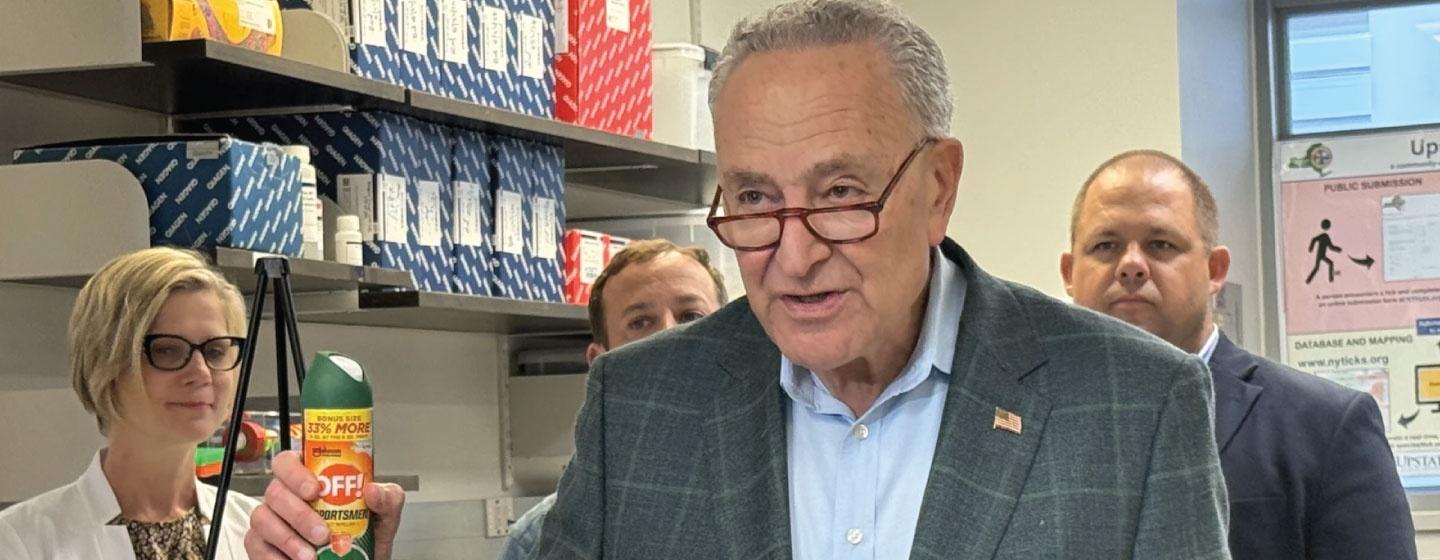Schumer Pushing for Funds To Fight Mosquito-Borne Illnesses

Sen. Chuck Schumer (D-NY) is proposing a two-pronged approach to help squash mosquitoes that can carry the deadly Eastern Equine Encephalitis virus.
Standing in front of a lab that studies mosquito-borne illnesses at Upstate University Hospital in Syracuse, Schumer called on the federal government to coordinate state and local plans that track the disease-carrying insects.
"I want the federal government, particularly the CDC, the Centers for Disease Control and the EPA, the Environmental Protection Agency, to step up coordination efforts to help New York and local officials," Schumer said.
He said the CDC and EPA have a unique ability as national organizations to go beyond state lines.
"The EPA does more research on how these mosquitoes spread, how the diseases spread," he said. "They also can supply supplies like mosquito traps to central New York governments and do many other things in this program. They're rather flexible about it.”
Schumer also wants to earmark an extra $65 million for the CDC’s Vector-Borne Disease program. Those funds can coordinate research and offer help to local communities trying to keep track of mosquitoes.
Dr. Saravanan Thangamani, part of Upstate’s team studying mosquito-borne illnesses, said the extra attention is welcome, especially at a time when global warming can make things worse.
"Warmer temperatures can enhance the reproduction rate of mosquitoes, the primary vectors of the West Nile Virus," said Thangamani. "High temperatures can also shorten the virus incubation period in the mosquitoes, increasing the likelihood of transmission. And also changes in the rainfall patterns can create more standing water, ideal breeding sites for mosquitoes."
Schumer’s push comes after the first human fatality from EEE in New York since 2015, and several other human cases of the virus in Jefferson, Wayne and Clinton counties.
This article was originally published on WRVO.
Related

Hochul, Raimondo Join Micron Leaders, Educators To Highlight Industry Education
A panel discussion with local, state and national leaders along with Micron officials and New York state educators highlighted some of the opportunities today's students are getting in science and tech education.


